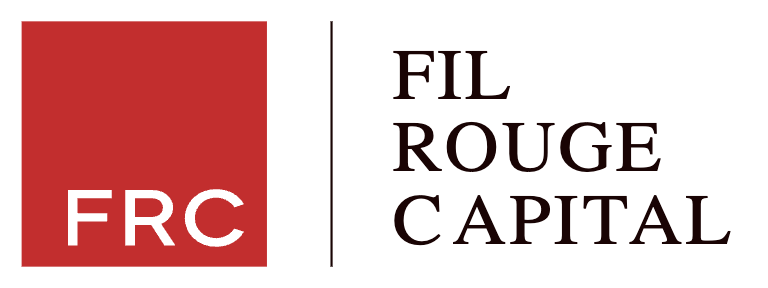In the world of SEO, thin content poses a significant challenge. It refers to web pages that offer little to no value to users, often characterized by low word count, duplicate information, or lack of depth.
Identifying and addressing thin content is crucial for maintaining search engine rankings and ensuring a rich user experience. This article explores what thin content is, how to identify it, and strategies to enhance content quality on a website.
What Is Thin Content?
Thin content refers to web pages that provide minimal or no value to users.
This type of content is often short, redundant, or lacking in-depth information.
Pages with thin content fail to address user queries effectively, leading to poor user engagement and higher bounce rates.
Definition and Examples
Thin content encompasses various forms, including duplicate content, automatically generated content, and pages with little substantive text.
For instance, a product page with just a brief description or a blog post that rephrases existing material without adding new insights would be considered thin.
Doorway pages created to rank for specific keywords but offering no additional value are also prime examples of thin content.
Why Thin Content Is a Problem
Thin content poses significant issues for both user experience and search engine rankings.
Search engines like Google prioritize high-quality, relevant content that serves users’ needs.
Thin content often fails to meet these criteria, leading to lower search rankings and reduced organic traffic.
When users land on pages that lack valuable information, they are more likely to leave quickly.
This negatively impacts site metrics like time on site and conversion rates.
Consequently, addressing thin content is essential for maintaining website authority and performance.
How to Identify Thin Content
Identifying thin content is the first step to improving a website’s SEO performance. Recognizing weak areas helps in prioritizing efforts to enhance content quality.
Using Google Analytics
One effective method to identify thin content is through Google Analytics. Users can locate pages with:
- High bounce rates
- Low average time on page
- Low conversion rates
These metrics indicate user dissatisfaction and can signal thin content.
Analyzing behavior flow can also reveal problem areas where users drop off. Combining these insights enables a focused approach to content optimization.
Manual Content Review
A manual review process involves evaluating each piece of content on the website. Reviewers should check for key attributes such as relevancy, depth, and originality.
Pages that lack comprehensive information or appear redundant should be flagged. Comparing content quality against competitors can provide benchmarks for improvement.
Manual audits, although time-consuming, offer direct insights that automated tools may overlook.
Tools for Identifying Thin Content
Numerous tools assist in pinpointing thin content. Tools like Screaming Frog SEO Spider crawl the site to highlight pages with low word counts and internal linking issues.
SEMrush and Ahrefs offer content audit features that identify pages with low traffic and engagement metrics, suggesting thin content.
These tools provide actionable data, making it easier to prioritize which areas need immediate attention.
By systematically identifying thin content through analytics, manual review, and specialized tools, website owners can efficiently address deficiencies. This comprehensive approach ensures that all weak points are uncovered, paving the way for strategic content enhancements.
Strategies to Fix Thin Content
Addressing thin content is crucial for boosting SEO and enhancing user experience. Different approaches can be taken to improve the quality and depth of web pages, ensuring they provide more value to users.
Content Expansion Techniques
One effective strategy is content expansion. Start by identifying topics that can be elaborated on.
Writers should aim to provide comprehensive answers to common questions in the niche. Use subheadings, bullet points, and numbered lists to organize information clearly.
Adding relevant images, videos, and infographics can provide visual appeal and make information easier to digest. Including external and internal links to authoritative sources can also add value and depth.
For example, a short product description can be transformed into a detailed guide by including usage tips, benefits, and customer reviews.
Improving Content Quality
Improving content quality involves various elements. Authors should prioritize producing original, valuable content that addresses the audience’s needs.
Editing for clarity, grammar, and factual accuracy is essential. It’s beneficial to incorporate data, statistics, and case studies to strengthen the credibility of the content.
Making use of keyword research can help in identifying the most relevant terms to target, improving the likelihood of ranking higher in search engines. Reading competitors’ high-performing content can provide insights into additional information that can be included.
Regularly updating content to keep it current ensures it remains relevant.
Leveraging User-Generated Content
User-generated content (UGC) is another powerful tool. Encouraging users to submit reviews, testimonials, and comments can enrich the webpage’s content.
UGC not only adds unique perspectives but also engages the community, fostering a sense of loyalty and trust. Implementing Q&A sections where users can ask questions and receive answers adds depth and value.
Social media integration, where posts and comments from users are displayed, can also provide fresh, dynamic content. Hosting forums or discussion boards on the website can further entice users to contribute, enhancing content variety and volume.
Preventing Thin Content in the Future
Preventing thin content is crucial for maintaining high-quality, engaging websites. Taking proactive steps can ensure continuous value delivery to users and sustain effective SEO performance.
Regular Content Audits
Regular content audits are vital for identifying potential thin content before it harms the site’s performance. Conduct audits quarterly to evaluate existing content’s relevancy, depth, and engagement.
Use metrics like page views, average time on page, and bounce rates to assess user interaction. During audits, compare each page against current industry standards and competitor content. This helps pinpoint areas needing updates or expansion.
By staying vigilant, website owners can maintain a robust, valuable content library.
Creating a Content Strategy
A well-defined content strategy is essential to avoid thin content. Start by outlining clear objectives aligned with user needs and business goals. Conduct thorough keyword research to identify topics and queries with high user demand.
Create a content calendar to plan regular updates and new content publication. Ensure each piece has a specific purpose, target audience, and desired outcome.
Focus on producing in-depth, original content that offers unique insights or solutions. Incorporating various content formats can enhance engagement and keep the content library dynamic:
- blogs
- videos
- infographics
Monitoring and Adjusting
Continuous monitoring and adjusting help sustain content quality and relevance. Use analytics tools to track performance metrics and gather user feedback. Regularly review search engine rankings to identify content effectiveness and potential issues.
Adapt content based on changing user preferences, industry trends, and algorithm updates. Encourage cross-departmental collaboration to integrate diverse perspectives and expertise.
Conducting periodic competitor analysis can reveal gaps in content offerings and new opportunities. By maintaining flexibility and responsiveness, content strategies can continuously evolve to meet user expectations and SEO standards.
Wrapping It Up
Effectively addressing thin content is vital for SEO success and user satisfaction. By using tools, manual reviews, and analytics, one can identify weak content areas.
Employing techniques like content expansion, quality improvement, and leveraging user-generated content can transform thin pages. Regular audits, a solid content strategy, and continuous monitoring will ensure long-term content quality and performance.
Taking these steps will help maintain robust search engine rankings and user engagement.



